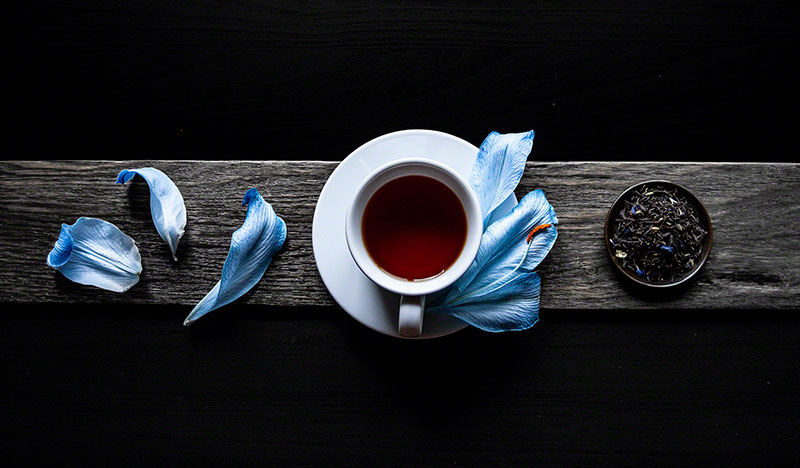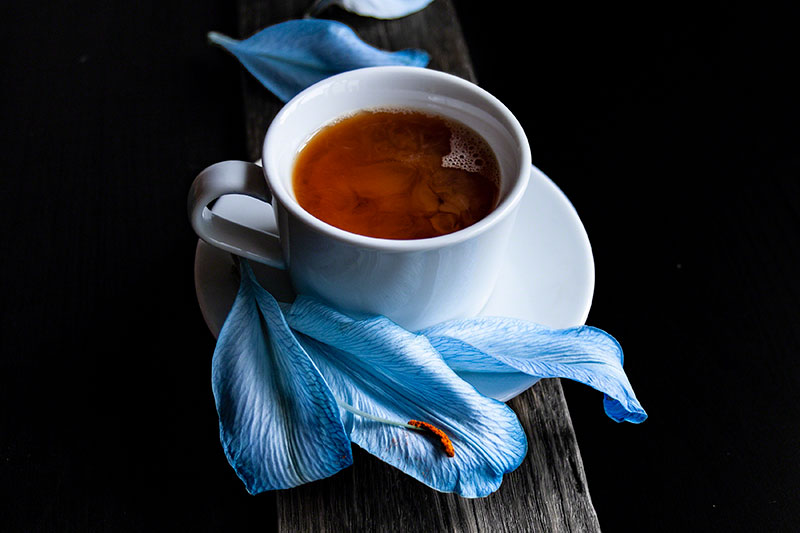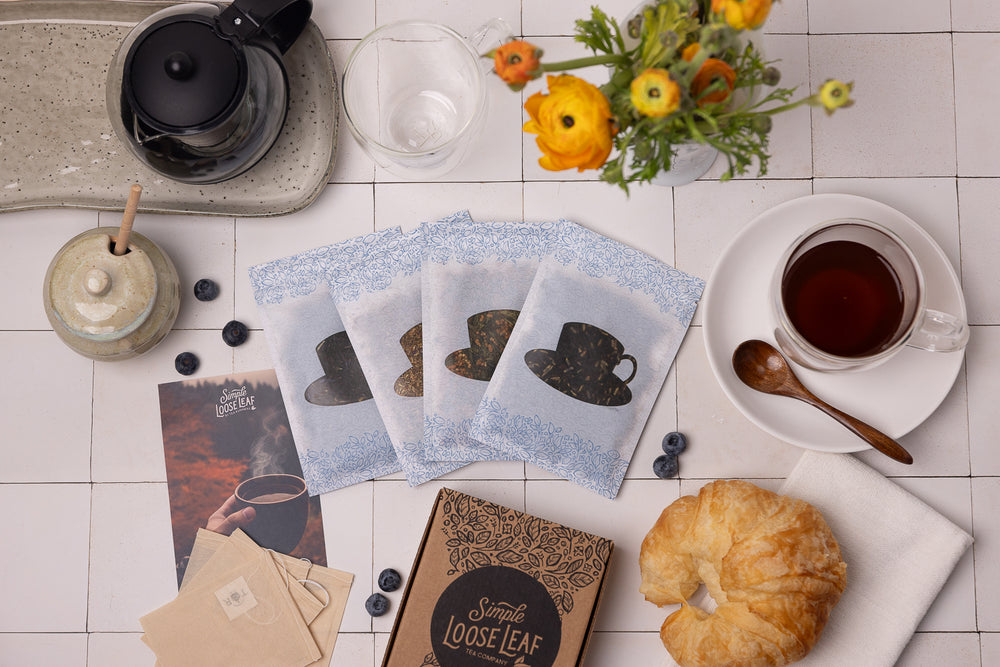English Breakfast vs Earl Grey Tea: What's the Difference?
This post may contain affiliate links. Simple Loose Leaf is a participant in the Amazon Associates Program, an affiliate advertising program designed to provide a means for sites to earn advertising fees by linking to Amazon.com. English Breakfast and Earl Grey tea are the most popular tea blends in the world. These timeless blends have a history of almost 200 years and were both created in the United Kingdom. Alongside with sencha, chamomile and mint, they are the most common teas available in almost every supermarket and tea shop around the world. You can buy them in tea bags and loose leaf form, with leaves ranging from dust and fannings to broken and full leaf.
What is the difference between English Breakfast and Earl Grey tea?
Both English Breakfast and Earl Grey tea are blends. They are made with Chinese, Assam, Ceylon and Kenyan teas, or even more unusual black teas such as Scottish. Regular English Breakfast blend will almost always include two different teas to create a full bodied robust blend with a recognizable flavor. The choice of teas is not strict, but they will always be black, and always strong. The most important ingredient in the Earl Grey tea is bergamot oil, while the type of tea can differ. Original Earl Grey tea was always made from black tea, but nowadays, blends with green, oolong, white and pu’erh tea are widely available. Herbal teas like rooibos and honeybush make a delicious caffeine free earl grey blends with a distinctive flavor mixed with natural sweetness.English Breakfast will never be available in green, oolong or herbal variant because none of them can offer a flavor, character or caffeine content that make English Breakfast an English Breakfast.

History of black teas
History of English Breakfast tea
English Breakfast is a type of tea said to be created by a Robert Drysdale, a Scottish tea merchant and manufacturer in 1892[1]. He wanted to have a perfect drink for a hearty English breakfast. However, there were other morning blends available even 60 years before that. Even today, English Breakfast tea has an irreplaceable importance in British households.English Breakfast is only one of hundreds of different “breakfasts” around the world. To be a breakfast tea, blend needs to be full-bodied, malty, robust and awakening. Even additional flowers and fruits are welcomed, as long as the tea keeps its properties.
History of Earl Grey tea
The first black tea that was supposedly used in Earl Grey blends was from China. There are several stories related to the origin of Earl Grey tea, and they all include one person – lord Charles Grey, the British Prime Minister from the early 19th century. One story say that a London tea house, Jacksons of Piccadilly, are the first that blended this tea for lord Grey. Apparently, lord Grey received this tea as a diplomatic present, and asked a tea merchant to re-invent it[2]. Other sources say this tea was available even earlier, and bergamot oil was used to enhance the flavor of low quality tea.Difference in Taste
While Earl Grey has a very recognizable bergamot note, you might not be so lucky with an English Breakfast tea. Although the main purpose of blending was to achieve a very recognizable blend, nowadays the flavor range can be wide. Bergamot oil is made from an edible bergamot orange and gives a refreshing, unique citrus scent and flavor different from the regular orange.Nowadays, you will always know what kind of flavor you can expect from an Earl Grey tea, but the flavor of English Breakfast can differ greatly.Both types can have many other sub-types too. For example, stronger type of English Breakfast is Irish Breakfast tea. Even stronger – Scottish Breakfast tea. Black tea blended with bergamot oil and blue mellow flowers is called Lady Grey, while Rose Grey tea includes rose petals.
Best time to drink black teas
Best time to drink black tea is in the morning or after a meal. Research showed that black tea might be more beneficial for gut and cardiovascular health than green tea[3]. Black tea on an empty stomach might be a bad idea because of higher caffeine content. Avoid black caffeinated teas in the late afternoon, evening and before going to sleep. The best season for drinking black tea is fall and winter. Black tea with full body is a great choice for making warming lattes and blending with spices to give an extra comfort during cold months. Try using both English Breakfast and Earl Grey to make a warming latte and sweeten with honey. Earl Grey might be a better dessert tea option, while English Breakfast is a more of an everyday regular tea.A morning cup of English Breakfast tea should always have milk. Milk and sugar in morning teas are defaults, not an option.

Adding milk to English Breakfast and Earl Grey tea is not only allowed, it's almost a rule
Does English Breakfast or Earl Grey have more caffeine?
Both are usually high in caffeine, but this will solely depend on the type of leaves in the blend. English Breakfast is likely to contain more caffeine than Earl Grey. Earl Grey tea with other ingredients such as flowers will probably have less caffeine. Both English Breakfast and Earl Grey are available in decaf style. If you want to choose the tea with most caffeine, opt for those from Assam tea leaves.References:
[1] https://www.diffordsguide.com/encyclopedia/1155/bws/english-breakfast-tea [2] https://www.gov.uk/government/history/past-prime-ministers/charles-grey-2nd-earl-grey [3] https://academic.oup.com/ajcn/article/98/6/1631S/4577455
More from:
SLL




Leave a comment